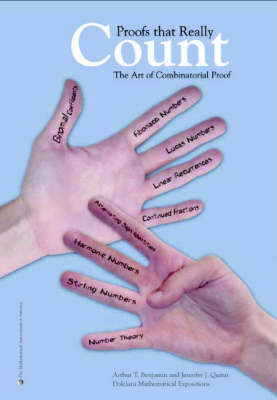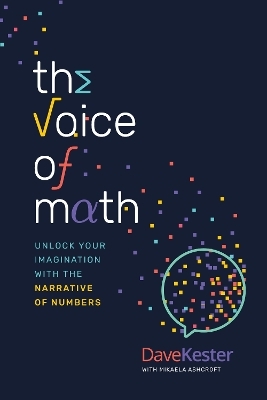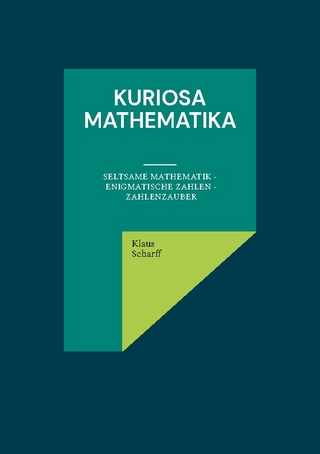
Proofs that Really Count
The Art of Combinatorial Proof
Seiten
2003
Mathematical Association of America (Verlag)
978-0-88385-333-7 (ISBN)
Mathematical Association of America (Verlag)
978-0-88385-333-7 (ISBN)
- Titel erscheint in neuer Auflage
- Artikel merken
Award-winning math professors Arthur Benjamin and Jennifer Quinn demonstrate that many number patterns can be understood by simple counting arguments. Numerous hints and references are given for all exercises and the extensive appendix of identities will be a valuable resource. Ideal for readers from high school students to professional mathematicians.
Mathematics is the science of patterns, and mathematicians attempt to understand these patterns and discover new ones using a variety of tools. In Proofs That Really Count, award-winning math professors Arthur Benjamin and Jennifer Quinn demonstrate that many number patterns, even very complex ones, can be understood by simple counting arguments. The book emphasizes numbers that are often not thought of as numbers that count: Fibonacci Numbers, Lucas Numbers, Continued Fractions, and Harmonic Numbers, to name a few. Numerous hints and references are given for all chapter exercises and many chapters end with a list of identities in need of combinatorial proof. The extensive appendix of identities will be a valuable resource. This book should appeal to readers of all levels, from high school math students to professional mathematicians.
Mathematics is the science of patterns, and mathematicians attempt to understand these patterns and discover new ones using a variety of tools. In Proofs That Really Count, award-winning math professors Arthur Benjamin and Jennifer Quinn demonstrate that many number patterns, even very complex ones, can be understood by simple counting arguments. The book emphasizes numbers that are often not thought of as numbers that count: Fibonacci Numbers, Lucas Numbers, Continued Fractions, and Harmonic Numbers, to name a few. Numerous hints and references are given for all chapter exercises and many chapters end with a list of identities in need of combinatorial proof. The extensive appendix of identities will be a valuable resource. This book should appeal to readers of all levels, from high school math students to professional mathematicians.
1. Fibonacci identities; 2. Lucas identities; 3. Gibonacci identities; 4. Linear recurrences; 5. Continued fractions; 6. Binomial identities; 7. Alternating sign binomial identities; 8. Harmonic numbers and Stirling numbers; 9. Number theory; 10. Advanced Fibonacci and Lucas identities.
| Erscheint lt. Verlag | 13.11.2003 |
|---|---|
| Reihe/Serie | Dolciani Mathematical Expositions |
| Zusatzinfo | 100 Line drawings, unspecified |
| Verlagsort | Washington |
| Sprache | englisch |
| Maße | 185 x 262 mm |
| Gewicht | 518 g |
| Themenwelt | Mathematik / Informatik ► Mathematik ► Arithmetik / Zahlentheorie |
| Mathematik / Informatik ► Mathematik ► Graphentheorie | |
| ISBN-10 | 0-88385-333-7 / 0883853337 |
| ISBN-13 | 978-0-88385-333-7 / 9780883853337 |
| Zustand | Neuware |
| Haben Sie eine Frage zum Produkt? |
Mehr entdecken
aus dem Bereich
aus dem Bereich
Sieben ausgewählte Themenstellungen
Buch | Softcover (2024)
De Gruyter Oldenbourg (Verlag)
64,95 €
unlock your imagination with the narrative of numbers
Buch | Softcover (2024)
Advantage Media Group (Verlag)
19,90 €
Seltsame Mathematik - Enigmatische Zahlen - Zahlenzauber
Buch | Softcover (2024)
BoD – Books on Demand (Verlag)
20,00 €


